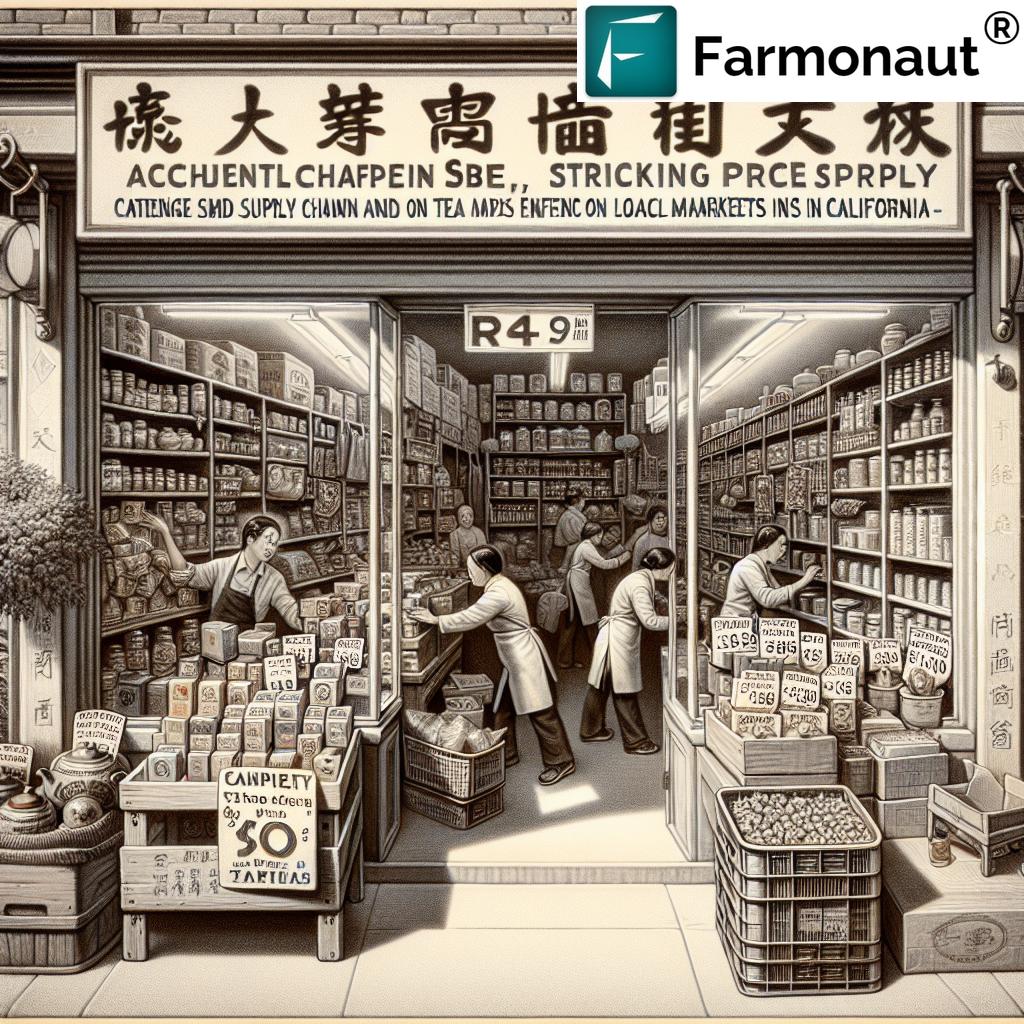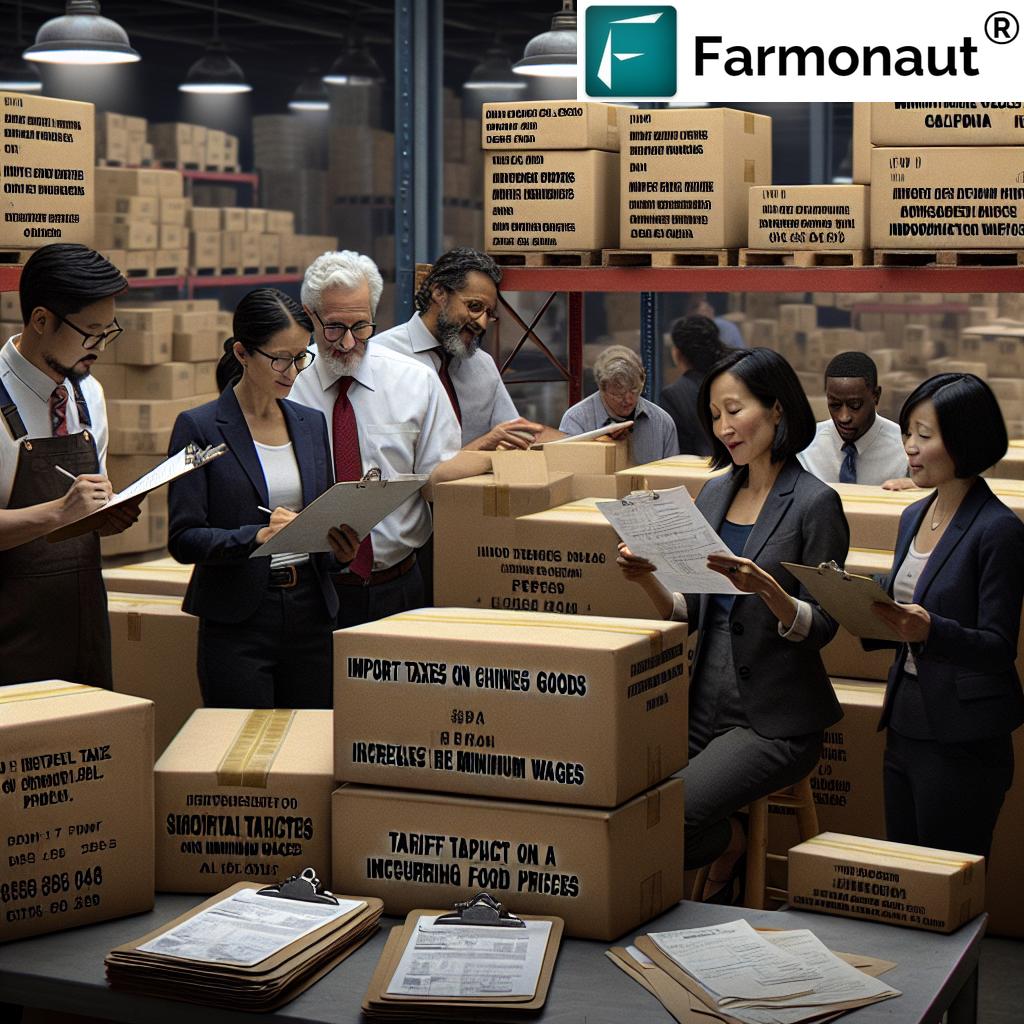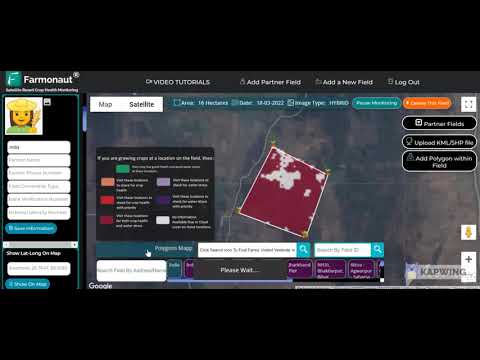China Import Tariffs: 7 Powerful Impacts on Oakland Chinatown Markets
Table of Contents
- Did You Know?
- Summary: The Landscape of Tariffs and Local Markets
- Introduction: Why China Import Tariffs Matter to Oakland Chinatown Markets
- 1. Ingredient and Product Prices Soaring: The First Blow of China Import Tariffs
- 2. Inventory Issues and Disrupted Supply Chains
- 3. The California Restaurant Price Conundrum: Tariff Impact Meets Wage Increases
- 4. The Tea Trade War Impact: From Guizhou Farms to Bay Area Cafés
- 5. Shifting Menus, Product Variety, and Business Survival
- 6. Packaging and Ancillary Goods: The Domino Effect of Chinese Product Tariffs
- 7. Profit Margins Under Pressure: Long-Term Viability for Small Businesses
- Comparative Impact Table on Oakland Chinatown Markets
- Leveraging Advanced Agricultural Tech in a Challenging Trade Climate
- Frequently Asked Questions
- Conclusion
“Oakland Chinatown markets saw seafood prices rise by up to 25% after China import tariffs were imposed in 2018.”
Summary: The Landscape of Tariffs and Local Markets
In the heart of Oakland Chinatown, menu stickers trace a narrative of economic upheaval—from pandemic disruptions to minimum wage increases in California, and now, the sweeping imposition of China import tariffs. As the trade war effects on small businesses ripple outward, we observe the multifaceted impact on prices, supply chain, inventory, and the diversity of products in our neighborhoods. With Chinese product tariffs fluctuating and political decisions altering daily plans, local businesses must make tough choices to survive. In this comprehensive guide, we explore the seven most powerful impacts of these tariffs and wage changes on the vibrant, yet vulnerable, markets and restaurants of Oakland Chinatown and the surrounding Bay Area.
Introduction: Why China Import Tariffs Matter to Oakland Chinatown Markets
We are living through an era defined by economic uncertainty, where a single government announcement can reshape our food landscape overnight. Nowhere is this more evident than in Oakland Chinatown, where the legacy of immigration and cross-Pacific trade is under pressure from steep import taxes on Chinese goods.
For our community, these are not abstract policy debates—they represent the daily reality for restaurateurs, grocers, and consumers alike. The challenges go well beyond price tags: They threaten the delicate balance of supply and demand, strain supplier relationships, and impact cultural authenticity and business survival. As we navigate the twists and turns of this trade war, we must also contend with rising labor costs and enduring supply chain volatility.
Let’s examine how these factors come together, creating new hurdles and forcing us to rethink the future of our local markets and restaurants.
1. Ingredient and Product Prices Soaring: The First Blow of China Import Tariffs
China import tariffs have unleashed a tidal wave of cost increases across products essential to Asian cuisine. Many of our most relied-upon ingredients—dried mushrooms, black fungus, bamboo shoots, red chilies—are sourced directly from China, their authenticity critical to maintaining menu standards and customer expectations. With tariffs as high as 145% on select Chinese imports, these products are now prohibitively expensive or, at times, simply unavailable.
For Oakland Chinatown’s restaurants and markets, these abrupt price hikes have direct, visible repercussions:
- Menu prices escalate: Dishes once priced for value now carry higher costs, forcing menu reprints or, more commonly, a growing patchwork of stickered price changes. The result is an environment where customers face sticker shock, sometimes pricing them out of cherished meals.
- Ingredient substitutions: In an attempt to maintain profits, some businesses try to substitute pricier goods with domestic or alternative imports, but authenticity and taste often suffer.
- Tighter margins: Already slim, profit margins are compressed even further, leaving little room for error or innovation.
As Charles Hong of the iconic Shandong Restaurant noted, ingredient supply has become a matter of daily concern. With his importer pausing shipments, Hong can only hold on to existing inventory and brace for certain shortages—leading to fewer signature dishes and less culinary diversity on Oakland Chinatown’s tables. This is the visible face of the tariff impact on food prices.
2. Inventory Issues and Disrupted Supply Chains
When import taxes on Chinese goods change with little warning, the entire supply chain is thrown into chaos. Importers face a high-stakes gamble: Do they risk shipping containers across the ocean, only to see tariffs skyrocket before arrival? Or do they wait, risking empty shelves and disappointed chefs?
The result is widespread inventory issues and supply chain disruption:
- Unpredictable stock: Key items may vanish for weeks or months at a time. Families shopping for Lunar New Year or Mid-Autumn Festival are confronted with limited selection or missing ceremonial foods.
- Strategic hoarding: Businesses cling to legacy inventory, holding back scarce products in anticipation of future shortages.
- Supplier relationships under strain: Loyalty is tested as importers and wholesalers struggle to fulfill contracts, and grocers are forced to shop around or shift allegiances.
These supply chain issues are compounded by global logistics delays—container shortages, port backups, and shifting trade flows—making it even harder to forecast what will be in stock next week, let alone next season. For our Oakland Chinatown marketplaces, this means that trust and reliability, so vital to community commerce, are undermined by external trade decisions.
Managing uncertainty in agricultural supply chains requires reliable data and real-time oversight. Farmonaut empowers growers and businesses globally with tools for fleet management, satellite-based crop health monitoring, and advanced analytics, helping food producers anticipate shortages and optimize resource allocation.
“California restaurant menu prices increased by 8% on average due to combined effects of tariffs and wage hikes in 2023.”
3. The California Restaurant Price Conundrum: Tariff Impact Meets Wage Increases
No conversation about California restaurant prices in the Bay Area would be complete without considering both the minimum wage increases in California and the ongoing China import tariffs. When these two forces collide, the result is a dramatic squeeze on small business economics:
- Labor costs soar: Driven by the mandated rise in minimum wage, payroll expenses for San Jose and Oakland restaurants have hit new highs.
- Tariff-added material costs: From fresh vegetables to specialty teas, the cost of goods has also jumped. The average restaurant now pays significantly more for products essential to its cuisine.
- Consumer squeeze: To keep pace, restaurants adjust prices upward, with the 2023 average menu price up 8% compared to the previous year, according to industry surveys.
- Reduced customer traffic: As prices rise, some long-time customers dine out less often, reducing the turnover that small businesses depend on.
These pressures are not exclusive to Chinese or Asian businesses. As illustrated by Eli’s Produce Market in San Jose, even grocers specializing in global products—from Russia to Mexico—feel the cascading effects when suppliers pass along higher costs.
This convergence of rising wages and Chinese product tariffs is fundamentally reshaping the restaurant and retail landscape in our community, making adaptability and efficiency more important than ever.
Environmental responsibility is growing in importance as businesses manage rising costs. Farmonaut’s carbon footprinting solution gives agribusinesses a practical way to track and reduce their emissions while controlling resource usage and regulatory compliance.
4. The Tea Trade War Impact: From Guizhou Farms to Bay Area Cafés
A central part of the Oakland Chinatown market changes during this trade war is the profound tea trade war impact. Tea culture is interwoven into the fabric of East Bay life, gracing restaurant tables, tea houses, and family gatherings. So, how does the trade war play out for tea?
- When tariffs on Chinese tea reach upwards of 145%, businesses such as Blue Willow in Berkeley are forced to pay significantly higher prices for their annual inventory—sometimes by as much as 24% depending on the country of origin.
- The cost of premium teas, such as matcha, can rise from $50 to over $62 per pound, threatening the affordability that underpins customer loyalty and product diversity.
- Shop owners face agonizing choices: buy less inventory, focus on fast-selling popular teas, or cut out rare and unique varieties that helped distinguish their businesses in the first place.
The effect is twofold: Customers lose access to beloved specialty teas, and businesses lose their competitive edge. Even substituting Chinese teas with Japanese or Taiwanese imports often fails to relieve financial pressure due to overlapping tariffs on other countries.
Ensuring authenticity and supply chain transparency in specialty products like tea is critical. Farmonaut’s product traceability platform uses secure blockchain technology to verify the origin and journey of goods, helping both businesses and consumers maintain trust in a volatile trade atmosphere.
5. Shifting Menus, Product Variety, and Business Survival
The compounded pressures of tariffs and wage increases have forced many Bay Area restaurants to make difficult operational decisions:
- Rationalizing inventory: Restaurant owners now focus on fewer, faster-selling items. Less popular or hard-to-source ingredients are dropped altogether, even when those dishes carry cultural and culinary significance.
- Menu simplification: Menus are streamlined, making it easier to manage costs but reducing the variety and personality that patrons expect from Chinatown establishments.
- Quality concerns: Substitutes for Chinese-grown vegetables or specialty foods rarely match the texture or flavor of originals, compromising experience and reputation in competitive markets such as Oakland and San Jose.
- Exploring alternative imports: For some, this means seeking new suppliers in Vietnam, Thailand, or elsewhere, incurring further logistical complexity and cost.
These changes strike at the very core of community business, making it difficult for restaurants and markets to deliver the diverse, high-quality experiences that built Oakland Chinatown’s culinary reputation.
Complex farm or market operations can be streamlined with real-time data and insights. Explore Farmonaut’s large-scale farm management app for comprehensive multi-site oversight, inventory visibility, and smart resource planning tailored for growers and food businesses.
6. Packaging and Ancillary Goods: The Domino Effect of Chinese Product Tariffs
It’s not just food products subject to new duties. The tariff impact on food prices expands into the realm of packaging and supplies:
- Takeout and delivery packaging: Most Asian restaurants in the Bay Area rely heavily on Chinese-made takeout boxes, bags, chopsticks, and to-go containers. As the price of these items climbs, restaurants are forced to absorb costs or risk alienating price-sensitive customers with surcharges.
- Sanitation and cleaning supplies: Even everyday items like gloves, sanitizing wipes, and disposable aprons are caught in tariff crosshairs, increasing routine operational costs.
- Wider industry ripple: Suppliers increase their prices, and larger chain stores enjoy greater economies of scale, widening the gap between them and independent community markets who can buy only by the box, not by the truckload.
Restaurant owners like Danny Huang of Hunan Taste in San Jose highlight how these incremental cost increases are just as threatening to overall profitability as food inflation—especially when the products can’t be easily substituted or sourced domestically.
7. Profit Margins Under Pressure: Long-Term Viability for Small Businesses
Finally, for many restaurateurs and grocers, the combined result of tariffs, wage hikes, and ongoing inflation is a crisis of profitability:
- Raising prices is not always an option: Because many immigrants and older patrons have limited budgets, price hikes carry the risk of driving away loyal customers.
- Non-food items suffer: Small bakeries and confectioners in Japantown, San Jose, point out that desserts are among the first purchases abandoned as disposable incomes contract.
- Competition from chains: Big box stores and restaurant groups can often weather cost increases better, leaving small businesses vulnerable to market consolidation and closure.
Business owners, like Tom Kumamaru of Shuei-Do Manju Shop, articulate what so many feel: uncertainty, anxiety, and a sense of being at the mercy of larger forces. If tariffs escalate or wages climb faster than sales, there’s little recourse except to cut hours, lay off staff, or close up shop.
For those seeking direct integration of precision agriculture data into their own business systems, access the Farmonaut API here. Full developer documentation is available here, supporting agricultural operators, supply chain managers, and technology developers across the globe.
Comparative Impact Table on Oakland Chinatown Markets
| Factor | Estimated Pre-Tariff Value | Estimated Post-Tariff Value | Impact Description |
|---|---|---|---|
| Ingredient Costs | 100% baseline | +25% to +145% (depending on item) | Tariffs increased imported prices, making some specialty ingredients up to 145% more expensive. |
| Inventory Levels | Full range available | Stockouts 2-4x more frequent | Tariff uncertainty led to delayed shipments and item shortages in Chinatown markets. |
| Menu Prices | Stable / minor inflation (< 3% annually) | +8% avg. price hike | Driven by tariffs and labor, menu prices in CA increased sharply in 2023. |
| Supply Chain Delays | Delivery within 2-4 days | Delays up to 14+ days | Logistics bottlenecks increased uncertainty, leading to strategic inventory hoarding. |
| Tea Import Costs | $50/lb premium teas | $62/lb (+24%) | Tea trade war impact made specialty teas more expensive and harder to source. |
| Wage Increase (CA) | $15/hr minimum | $17/hr minimum (2023-24) | Rising labor costs compounded the squeeze from tariffs for small businesses. |
| Overall Profitability | Average 7-10% profit margin | 2-5% (estimated) | Multiple cost factors led to profit margin collapse in independent Oakland and San Jose markets. |
Farmonaut Subscription Plans
Farmonaut subscriptions offer affordable, scalable access to advanced agricultural monitoring, analytics, fleet management, product traceability, and more. Choose the right tier for your farm, agribusiness, or corporate supply chain management.
Leveraging Advanced Agricultural Tech in a Challenging Trade Climate
The challenges facing Oakland Chinatown and broader California markets reflect a global need for innovation in agricultural management and food supply chains. Today, every node in the supply chain—from farm to warehouse, port to local market—benefits from better visibility, resource management, and carbon tracking.
- Satellite Imagery: With accurate, multispectral crop monitoring, we can detect stress in growing regions far upstream—anticipating which imports may become scarce and which supply chains may be most vulnerable to future tariffs or disruptions.
- AI & Jeevn Advisory: AI-powered insight helps growers and food enterprises select optimal crops, reduce resource waste, and plan for changing market realities.
- Blockchain Traceability: Food authenticity and safety is more important than ever. Blockchain-based systems ensure product traceability and consumer confidence—even across tumultuous international trade conditions. Learn more about traceability.
- Fleet & Logistics Management: End-to-end coordination of shipments can compress delays and mitigate supply chain risk, enabled by digital fleet solutions. Read about Farmonaut’s fleet management tools.
- Access to Financing & Risk Mitigation: Modern agritech can help banks and insurance providers verify claims, better supporting food producers during periods of high volatility. Explore crop loan and insurance solutions.
While tariff and wage pressures remain formidable, data-driven agriculture offers a path to resilience, enabling businesses to optimize every input—and perhaps buffer the volatility that has so tightly gripped local communities. Farmonaut stands at the forefront of this movement, committed to making precision farming accessible and affordable worldwide.
Frequently Asked Questions
What are China import tariffs and how do they affect Oakland Chinatown?
China import tariffs are imposed taxes or duties on goods imported from China to the U.S. For Oakland Chinatown restaurants and markets, they mean higher prices on essential ingredients, reduced product variety, and supply chain unpredictability.
Why have California restaurant prices risen so rapidly recently?
California restaurant prices have increased due to a combination of factors: minimum wage hikes, the impact of trade war tariffs on ingredients and packaging, and ongoing inflation from supply chain issues.
What is the “tea trade war impact” for Bay Area businesses?
The tea trade war impact refers to significantly higher tariffs on tea imported from China (and sometimes other countries like Japan), leading to increased wholesale costs, reduced selection, and higher prices for specialty teas in the Bay Area café and restaurant scene.
How have minimum wage increases in California compounded trade war effects?
Rising minimum wages have increased labor costs for restaurants and markets. When combined with higher product prices from tariffs, small businesses face a dual challenge to profitability—sometimes making it unsustainable to continue without raising prices or cutting services.
Are there solutions to manage inventory and supply chain issues for food businesses?
Yes. Technologies such as satellite-based crop monitoring, resource management tools, and blockchain traceability (offered by companies like Farmonaut) allow food businesses to track conditions on the ground, anticipate shortages, and optimize ordering strategies to minimize risk.
Can Farmonaut help if I run a food supply business or farm?
Farmonaut offers a suite of digital tools for real-time crop health analysis, AI-based advisory, product traceability, and logistics management to help businesses increase resilience and efficiency—critical in an uncertain tariff and wage environment.
Conclusion: Navigating Uncertain Waters with Smarter Strategy
The last decade has tested the resiliency of Oakland Chinatown and broader Bay Area markets like never before. Unpredictable China import tariffs, rapid minimum wage increases in California, and chronic inventory issues supply chain complications have forced us all—business owners, customers, and community leaders—to innovate and adapt.
But amid these headwinds, technology and data-driven management offer a way forward. By investing in tools for carbon footprint tracking, product traceability, large-scale management, and flexible subscription-based agritech solutions, we build supply chains that are more transparent, sustainable, and resilient. Advanced, satellite-driven platforms like Farmonaut empower us with the oversight, insights, and agility needed to weather whatever the next headline brings.
For Oakland Chinatown—and every market shaped by global trade and local regulation—the future belongs to those who embrace change, harness new tools, and remain rooted in community purpose. Let us continue supporting our neighborhood businesses, advocating for fairness in trade, and building a more resilient food system for all.








